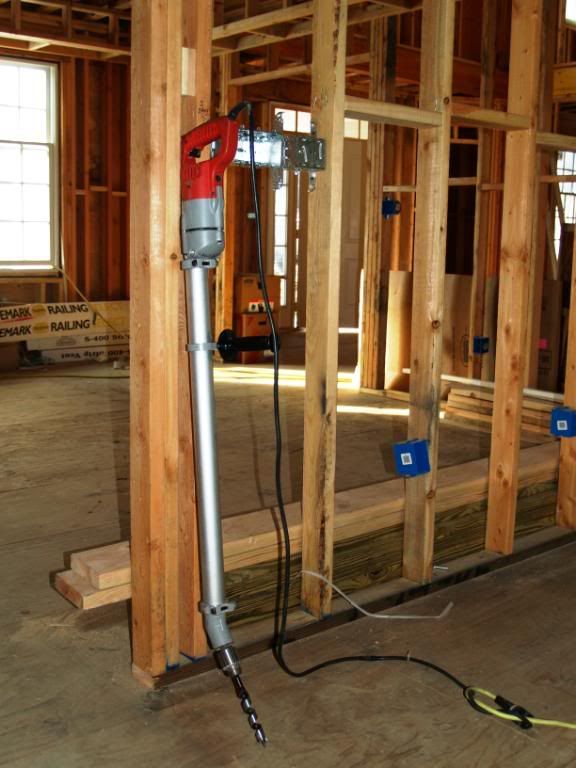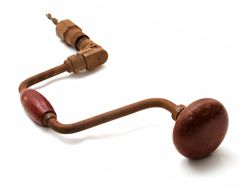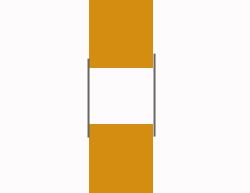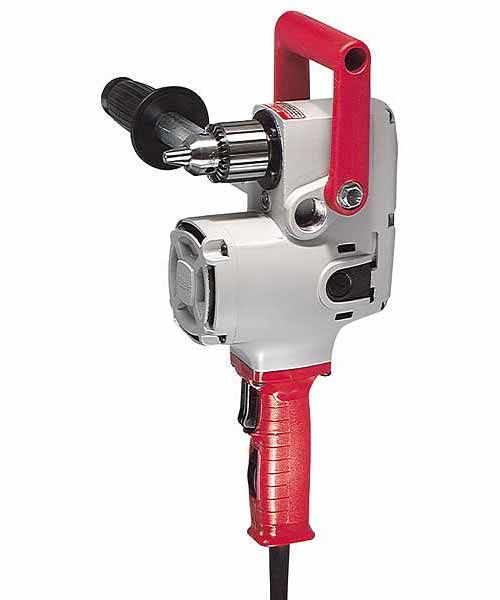A hole hawg with a ship auger is the way to go. We've used them since 1972 and they are a hard drill to top. A word of caution when using hole saws use a different drill. The larger hole saws tend to grab and a hole hawg is not forgiving it will break something or throw you.
You are using an out of date browser. It may not display this or other websites correctly.
You should upgrade or use an alternative browser.
You should upgrade or use an alternative browser.
Let's Make Some Holes
- Thread starter laketime
- Start date
- Status
- Not open for further replies.
JFletcher
Senior Member
- Location
- Williamsburg, VA
With the 1-1/8 auger, if you are drilling 2 x 4s would this not present a problem with 300.4(A)(1) ? With the actual size of 3-1/2", even if you bored dead center you would technically be in vilolation.
It would only be a violation in 2x4s if nail plates aren't used.
re: the Hole Hawg, doesn't it have a torque control/clutch to keep the drill from breaking a wrist if (when) it hangs?
laketime, out of those two I'd get the variable speed.
that what where I was leading, I forgot to "fill in the blanks", my point was with the 1-1/8 bit & 2 x 4s, one would need a barrel of nail-plates if 300.4 was rigidly enforced.It would only be a violation in 2x4s if nail plates aren't used.
...........................
.
Charlie Bob
Senior Member
- Location
- West Tennessee
i use dewalt
i use dewalt
I got a clutch controled dewalt joist and stud drill.( it's got a winding control feature)
they came out with it last year i believe. I do both Electrical and Plumbing so this one comes in handy , since you can drill up to 6" holes with a Hole saw. You can imagine you need a safety feature if you are to go that big.
I've used the right angle drill milwakee all the time for electricall. but i like the dewalt better for bigger holes. Definately selffeed brill bits though.
Sorry to lazy to take a picture now.
i use dewalt
I got a clutch controled dewalt joist and stud drill.( it's got a winding control feature)
they came out with it last year i believe. I do both Electrical and Plumbing so this one comes in handy , since you can drill up to 6" holes with a Hole saw. You can imagine you need a safety feature if you are to go that big.
I've used the right angle drill milwakee all the time for electricall. but i like the dewalt better for bigger holes. Definately selffeed brill bits though.
Sorry to lazy to take a picture now.
With the 1-1/8 auger, if you are drilling 2 x 4s would this not present a problem with 300.4(A)(1) ? With the actual size of 3-1/2", even if you bored dead center you would technically be in vilolation.
Not unless the cable is on the outer edge of the hole :grin:
I have done the math before and I know what you mean but rhe 1 1/8 bit is the standard out here.
As far as the plumber/electrician model? I would go with the plumber's. No need for variable speed when drilling studs with an auger bit.
I also liked the older models placement of the reverse switch. I always have to look for the new one. The old one was right there on the side at your thumb. You WILL be using the reverse switch. Auger bits tend to not cut cleanly thru the back side and pull themselves in thru the hole.
Not unless the cable is on the outer edge of the hole :grin:
I have done the math before and I know what you mean but rhe 1 1/8 bit is the standard out here.
.
Notice what the Code actually says
(1) Bored Holes. In both exposed and concealed locations, where a cable- or raceway-type wiring method is installed through bored holes in joists, rafters, or wood members, holes shall be bored so that the edge of the hole is not less than 32 mm (1? in.) from the nearest edge of the wood member.
That 's why I mentioned "literal" enforcement. Following the rule, it makes no difference where the cable is (within the hole), it's the edge of the hole. With a 1-1/8 but it's mathematical impossible to keep the edge of the hole 1-1/4 from the edge of a 2 x 4.
Pierre C Belarge
Senior Member
- Location
- Westchester County, New York
I have the same thing, but it's not a dedicated drill, but rather it fits into the chuck of any ?" drill.
BTW, Pierre, you many want to straighten out that one box.... looks a wee bit crooked.:grin:
This picture is a job I was visiting, not one of my actual jobs when I was contracting. That box is kind of crooked, isn't it:grin:
Notice what the Code actually saysA) Cables and Raceways Through Wood Members.
(1) Bored Holes. In both exposed and concealed locations, where a cable- or raceway-type wiring method is installed through bored holes in joists, rafters, or wood members, holes shall be bored so that the edge of the hole is not less than 32 mm (1? in.) from the nearest edge of the wood member.
That 's why I mentioned "literal" enforcement. Following the rule, it makes no difference where the cable is (within the hole), it's the edge of the hole. With a 1-1/8 but it's mathematical impossible to keep the edge of the hole 1-1/4 from the edge of a 2 x 4.
I point out the wording quite a bit. The guys usually get mad.
- Location
- Chapel Hill, NC
- Occupation
- Retired Electrical Contractor
Here is a picture of the gooseneck I used. There is little need for a ladder in standard 8ft ceilings, and virtually no bending down as well for lower holes. I used these many, many years.

I would be lost without this tool. I also use it for drilling thru studs since it is easier than changing drills to the right angle. I do own a right angle also but I tend to use this one more often.
LarryFine
Master Electrician Electric Contractor Richmond VA
- Location
- Henrico County, VA
- Occupation
- Electrical Contractor
This really is a boring subject, isn't it? :grin:

Also, the angle head that comes with the drill itself doesn't have a 1:1 gear ratio, so you can mount it for more torque or more speed.
Every drill has its use. I really do use the 36v DeWalt for rough drilling unless there's convenient power handy. I don't unroll a cord unless I have to.
I have one of them. Torquey, but the angle handle minimizes problems.
I have one of those, too. The first cordless drill.
Here you go...
I don't have one of those, but the fumes may keep bugs away, too.
gas powered baby (you can get a right angle attachment)
(plus the fumes run the other trades out)
I dunno. The 36v DeWalt will do it.Cant imagine drilling a house with a cordless drill.
Yep, got that setup, too. It's also great for drilling down on an outside wall, because you can angle back in and miss the band joist.
Also, the angle head that comes with the drill itself doesn't have a 1:1 gear ratio, so you can mount it for more torque or more speed.
Every drill has its use. I really do use the 36v DeWalt for rough drilling unless there's convenient power handy. I don't unroll a cord unless I have to.
ItsHot
Senior Member
- Location
- A little piece of heaven!
Irwin Speedbor bits
Irwin Speedbor bits
Irwin Speedbor bits
I like the Milwaukee RAD for angle drilling. But for straight drilling I like my 24volt cordless Dewalt with the Irwin brand Speedbor bits available at the blue box! They cut 3 times faster than anything out there!!What drill is the best for drilling out wood studs for housing rough in?
- Location
- Windsor, CO NEC: 2023
- Occupation
- Hospital Master Electrician
Weird. Seems like more work to me, nailplating aside. 7/8" is all the hole I ever really need. To each their own!...the 1 1/8 bit is the standard out here.
guitarsarge
Member
- Location
- Texas
I've always thought that 1.25" was to not only protect the wire, but the integrity of the 2x4 member. Isn't it 40%?
bjp_ne_elec
Senior Member
- Location
- Southern NH
(plus the fumes run the other trades out)
Yeah - and how long can you live with the fumes.
Nakulak - I'm worried about ya.
- Location
- Windsor, CO NEC: 2023
- Occupation
- Hospital Master Electrician
No, the section is written solely with the protection of the cable in mind. You would need to look to the building codes (and documentation from the engineered lumber company's spec, I believe) to know if you can drill a hole in a piece of wood in the first place.I've always thought that 1.25" was to not only protect the wire, but the integrity of the 2x4 member. Isn't it 40%?
We can drill a 2" hole (or a 2" notch) in a 2x4, cover both sides with a nailplate, and the NEC is satisfied. That doesn't mean the framer's inspector would be happy with us in some instances.
guitarsarge
Member
- Location
- Texas
Well, that's what I meant:wink:
I think from a framing standpoint, it's 40% for a 2x4. Of course i realize the nec doesn't cover framing, I think they just coincide...
I think from a framing standpoint, it's 40% for a 2x4. Of course i realize the nec doesn't cover framing, I think they just coincide...
guitarsarge
Member
- Location
- Texas
Oh wait, but if you drill a 2" hole in a 2x4 wouldn't that violate the 1.25"? :smile:
guitarsarge
Member
- Location
- Texas
Nvm, I tried to edit my post, but must've done something wrong:-?
Anyway, I see your point as long as you protected the wire with the plate.
here's what it would look like though:grin:

Anyway, I see your point as long as you protected the wire with the plate.
here's what it would look like though:grin:

- Location
- Massachusetts
Well, that's what I meant:wink:
I think from a framing standpoint, it's 40% for a 2x4. Of course i realize the nec doesn't cover framing, I think they just coincide...
Many interior walls are not framed with 2x4s.
The NEC could not care less about the structural integrity of the building, the codes will not normally coincide.
ItsHot
Senior Member
- Location
- A little piece of heaven!
Such as a 2 story dwelling. Have you noticed what the plumbers can do to the framing of a home?:-?Many interior walls are not framed with 2x4s.
The NEC could not care less about the structural integrity of the building, the codes will not normally coincide.
iaov
Senior Member
- Location
- Rhinelander WI
A milwaukee 1/2" angle drill with Lennox bits. I've had carpenters express thier amazment at how fast they go through a stud.
- Status
- Not open for further replies.


